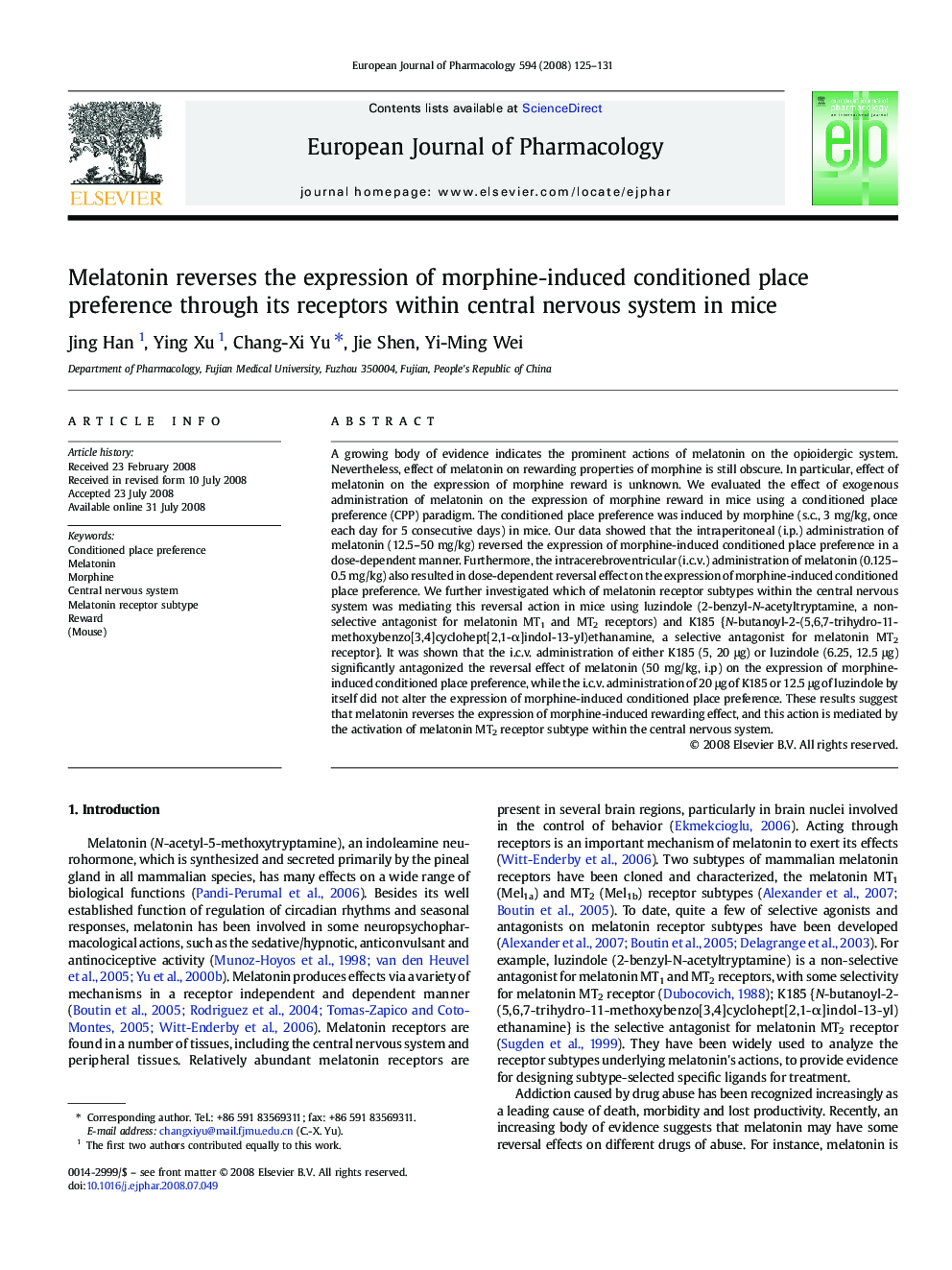| Article ID | Journal | Published Year | Pages | File Type |
|---|---|---|---|---|
| 2534907 | European Journal of Pharmacology | 2008 | 7 Pages |
A growing body of evidence indicates the prominent actions of melatonin on the opioidergic system. Nevertheless, effect of melatonin on rewarding properties of morphine is still obscure. In particular, effect of melatonin on the expression of morphine reward is unknown. We evaluated the effect of exogenous administration of melatonin on the expression of morphine reward in mice using a conditioned place preference (CPP) paradigm. The conditioned place preference was induced by morphine (s.c., 3 mg/kg, once each day for 5 consecutive days) in mice. Our data showed that the intraperitoneal (i.p.) administration of melatonin (12.5–50 mg/kg) reversed the expression of morphine-induced conditioned place preference in a dose-dependent manner. Furthermore, the intracerebroventricular (i.c.v.) administration of melatonin (0.125–0.5 mg/kg) also resulted in dose-dependent reversal effect on the expression of morphine-induced conditioned place preference. We further investigated which of melatonin receptor subtypes within the central nervous system was mediating this reversal action in mice using luzindole (2-benzyl-N-acetyltryptamine, a non-selective antagonist for melatonin MT1 and MT2 receptors) and K185 {N-butanoyl-2-(5,6,7-trihydro-11-methoxybenzo[3,4]cyclohept[2,1-α]indol-13-yl)ethanamine, a selective antagonist for melatonin MT2 receptor}. It was shown that the i.c.v. administration of either K185 (5, 20 μg) or luzindole (6.25, 12.5 μg) significantly antagonized the reversal effect of melatonin (50 mg/kg, i.p) on the expression of morphine-induced conditioned place preference, while the i.c.v. administration of 20 μg of K185 or 12.5 μg of luzindole by itself did not alter the expression of morphine-induced conditioned place preference. These results suggest that melatonin reverses the expression of morphine-induced rewarding effect, and this action is mediated by the activation of melatonin MT2 receptor subtype within the central nervous system.
